Sigma Xi Distinguished Lecturers, 2003-2004
Abstracts
Each lecturer has designated his or her topic(s) for three different types of audiences. Where more than one level is shown, the lecture can be adjusted to the needs of the audience:
- P (Public)
Aimed at presenting scientific issues of general concern to a public audience.
- G (General)
Intended for a normal Sigma Xi audience of both scientists and other scholars representing a broad range of disciplines.
- S (Specialized)
Aimed at scientists and students in fields that are closely related to that of the lecturer.
Thomas R. Albrecht
IBM Almaden Research Center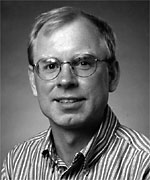
K62-C3
650 Harry Road
San Jose, CA 95120
Phone: 408-927-2537
Fax: 408-927-3008 E-mail: albrecht@almaden.ibm.com
- Magnetic Recording: Winner of the Data Storage Technology Race (G,S)
- The Disk Drive: Unsung Hero of the Technology Revolution (P)
Tom Albrecht received a B.A. in physics from Carleton College in 1985 and a Ph.D. in applied physics from Stanford University in 1989. His thesis research at Stanford focused on Atomic Force Microscopy (AFM), and included the first demonstration of atomic resolution imaging on electrically nonconducting samples, and the development of microfabricated force-sensing cantilever probes, which are used routinely in AFM today. After completion of graduate school, he worked briefly for Park Scientific Instruments (PSI), helping launch PSI's first AFM product.
Since late 1989, Tom has been a research staff member and manager at the IBM Almaden Research Center in San Jose, CA. At IBM, his work has centered primarily on technologies for tape and disk drives. In tape technology, he contributed to a novel track-following servo technology, referred to as "Timing-Based Servo," which allows higher track density and higher reliability. This technology, along with various mechanical designs of his, has been implemented in IBM's 3570 Magstar MP family of tape products, and has become the standard servo technology for the newly launched Linear Tape Open (LTO) tape platform adopted by Hewlett-Packard, IBM, Seagate, and other companies.
For disk drives, Tom spearheaded the development of ramp load/unload technology for IBM's Travelstar mobile disk drives. Load/unload technology provides increased data density, reduced power consumption, better shock robustness, and improved reliability over conventional contact start-stop technology commonly used in disk drives. Another recent project has been design and applications work for IBM's "Microdrive" 1-inch disk drive. The Microdrive is the world's smallest, lightest disk drive intended for new markets such as digital cameras, MP3 music players, and handheld computers.
Tom has 42 issued U.S. patents and 33 publications. He served on the LTO tape standards committee, and represented IBM in the CompactFlash Association to modify the CompactFlash standard to accommodate IBM's microdrive. He is a member of the IBM Academy of Technology.
Dr. Aviva Brecher
National Technical Expert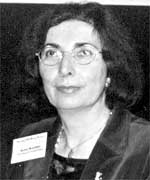
Environment, Safety and Health
Office of Environmental Preservation
and Systems Modernization, DTS-30
DOT/RSPA Volpe National Transportation Systems Center
55 Broadway
Cambridge, MA 02142-1093
Phone: 617-494-3470
Fax: 617-494-3633
E-mail: brecher@volpe.dot.gov
Web: www.volpe.dot.gov/enviro/index.html
- Bringing Magnetic Levitation Trains to the US: Technology and Policy Challenges (G)
- Balancing Transportation, Energy and the Environment- Problems, Progress and Prospects (G, P)
- Electromagnetic Fields and Health Hazards – A Physicist's Perspective(G, P)
- Transportation in 2050: Technologies and Outlook (G)
Aviva Brecher is a senior scientist (National Technical Expert) on transportation safety, health and environmental issues at DOT's John A. Volpe National Transportation Systems Center in Cambridge, MA. Until recently she was a senior strategic planner and policy analyst supporting transportation R&D planning for DOT administrations and the NSTC Transportation subcommittees.
At Volpe Center Dr. Brecher worked on a wide range of projects requiring technical expertise in the physical sciences and risk assessment, including: transportation applications of space-based remote sensing; commercial space launch and orbital safety assessments for licensing vehicles and spaceports; environmental, health and safety effects of electromagnetic fields (EMF) and radiation (EMR) for transportation systems and facilities; assessment of non-ionizing and ionizing radiation exposure risk for Occupational Safety and Health policy; outreach on transportation health effects and risk tradeoffs; magnetic levitation technologies safety analysis and regulations for maglev and high speed rail; measurement and comparative analysis of EMF emissions and exposures for existing and emerging transportation technologies; electromagnetic interference (EMI) prevention and mitigation for GPS-based navigation and ITS collision radars; assessment of the future global air traffic control; environment; threat/operations analysis and system optimization for drug interdiction; superconducting magnet safety for maglev and for energy storage; strategic transportation research planning and technology-based transportation forecasts; and innovation and technology transfer issues; advanced materials R&D for transportation applications and for physical infrastructure renewal; technologies to measure and control the environmental impacts of transportation.
Prior to joining DOT in 1987, she worked in academia, business and government on a broad range of interdisciplinary topics including: postdoctoral research in Earth and Planetary Sciences at MIT on the physical and magnetic properties of Apollo lunar samples and problems in planetary geophysics (1972-80); teaching physics courses at MIT and Wellesley College (1977-80); technical consulting on risk assessment and mitigation in space exploration, and on environmental modeling of nuclear waste disposal at Arthur D Little, Inc.(1980-85); Director of Academic-Corporate Relations at Boston University (1985-6), and American Physical Society (APS) Congressional Science Fellow for Sen. Paul Tsongas in 1983-84. She received her BS and MS in Physics from MIT in 1968, and a Ph.D.in Applied Physics from the University of California at San Diego in 1972.
Dr. Brecher is listed in Who's Who in American Science and Engineering, in American Women of Science, and has published over 100 professional papers and over 200 conference presentations and technical reports. She is a former Congressional Science Fellow of the American Physical Society (APS)and a Fellow of the APS. She served on several professional societies' committees, including: AAAS/COSEPP, APS/Panel on Public Affairs (POPA), Chair of the APS Forum on Physics and Society, NAS/TRB and NSTC Committees on emerging transportation technologies, the Interagency EMF Committee (EMF-IAC) and working groups; and the IEEE International Committee of Electromagnetic Standards (ICES) and Committee on Man and Radiation (COMAR).
James S. Brooks
Dept. of Physics FSU/NHMFL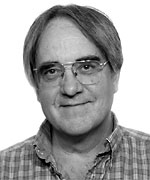
1800 East Paul Dirac Drive
Florida State University
Tallahassee Florida 32310
850-644-2836
Lab phone: 850-644-0446
Fax: 850-644-5038
E-mail: brooks@magnet.fsu.edu
Web: http://theory.magnet.fsu.edu/~btt
- Diamagnetism - The Less Well-known Magnetic Force and the Levitating Frog (P,G)
- The Summer Student Research Experience - They Appear at Your Door in Early Summer and Remind You about Your Generous Offer to Mentor Last Fall (G, S)
- Extreme Physics in High Magnetic Fields - Tricks with Superconductors, Explosives, and Atoms with Lots of f-electrons to Get Really High "B" (P, G, S)
Prof. Brooks has worked in many areas of experimental low temperature and high magnetic field physics. His early work at and involved the properties of superfluid helium, first in bulk liquid, and in restricted geometries and thin films. Upon joining the faculty at Boston University, he took advantage of the facilities at the Francis Bitter National High Magnetic Field Laboratory to develop very low temperature experimental capabilities in high magnetic fields. This opened new opportunities for the investigation for novel condensed matter systems - quantum fluids, organic conductors and superconductors, doped semiconductors, the quantum and fractional quantum Hall effects, and heavy Fermion systems - at temperatures below 0.1 K and in magnetic fields above 30 T. Brooks joined the faculty at Florida State University when the National High Magnetic Field Laboratory was established, and has since continued his high magnetic field research, which is presently funded by the National Science Foundation. International collaborations with Asian, Australian, and European research teams are a major component of his program. In his studies of low dimensional magnetic and superconducting materials, he has gone to the extremes of high magnetic fields in explosive magnetic flux compression experiments (800 tesla), and presently holds the record for doing an experiment in the largest steady state magnetic field at 47.8 tesla. He has also carried out magnetic levitation experiments, including the "floating frog" demonstration. Brooks has a keen interest and dedication to K-12 and other outreach and research experience programs, where every summer his group expands to include teachers and students at all levels in his laboratory activities. Brooks is presently teaching an honors level introductory astronomy class in the Physics Department at Florida State.
American Meteorological Society-
Sigma Xi Lecturer
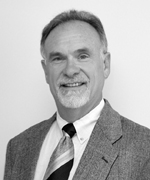
Richard (Rit) Carbone
National Center for Atmospheric Research
Box 3000
Boulder, CO 80307-3000
Phone: 303-497-8926
Fax: 303-497-8181
E-mail: carbone@ucar.edu
- Got Weather? Swirls, Splashes and Waves in the Atmosphere (P)
- When It Rains It Pours: A Tale of Two Islands (G)
- Will Thunderstorms Ever Be Predictable? (S)
Richard (Rit) Carbone is a Senior Scientist at the National Center for Atmospheric Research in Boulder, CO. He has authored more than 100 scholarly works. A pioneer in Doppler radar, he has published on physical processes in clouds and storms, topographically-influenced circulations, predictability of warm season rainfall, convection on tropical islands, and severe storms. Carbone led the United States Weather Research Program until 1999. He currently Chairs the World Meteorological Organization's World Weather Research Programme (Geneva, CH). He earned an S.M. (Atmospheric Physics, '69) at the University of Chicago and was elected Fellow of the American Meteorological Society in 1994. Among other honors, in 2001, Carbone received the Cleveland Abbe Award, For Distinguished Service to Atmospheric Science by an Individual.
Charles H Dowding
Department of Civil and Environmental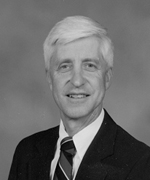 Engineering
Engineering
A122 Technological Institute
2145 Sheridan Road
Northwestern University
Evanston, IL 60208-3109
Phone: 847-491-4338
Fax: 847-491-4011
E-mail: c-dowding@northwestern.edu
Web:http://www.civil.northwestern.edu/people/
dowding.html
- Carving Crazy Horse: Art and Engineering of Blasting Massive Rock Monuments: (G, P, S)
- Watching Our Infrastructure: Autonomous Surveillance of Critical Facilities and the Internet (G, S)
Charles Dowding is a member of the board of directors of the International Society of Explosive Engineers and founded Digital Vibration Inc., the first company to perfect remote digital blast vibration monitoring in the early 1980's. He has written widely in the field of geotechnical engineering, and is best known for his three books: Construction Vibrations, Blast Vibration Monitoring and Control, and GeoMeasurements by Pulsing TDR Cables and Probes. He received his BS from the University of Colorado and PhD from the University of Illinois, was a Royal Norwegian Fellow at the Norwegian Geotechnical Institute, and taught at MIT before joining Northwestern University. He (along with coauthors) received the Applied Research Award from the National Rock Mechanics Committee for work on blast induced cracking of structures. Currently he is developing systems to autonomously monitor and display the status of critical facilities through the Northwestern Infrastructure Technology Institute.
Douglas J. Durian
UCLA Department of Physics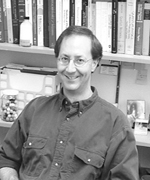
Knudsen Hall
Los Angeles CA 90095-1547
Phone: 310-206-2645
Fax: 310-206-5668
E-mail: durian@physics.ucla.edu
Web: http://www.physics.ucla.edu/~dws
- The Physics of Foams (G)
- Turning up the Heat on Effective Temperatures (S)
Doug Durian's general research interests are in the area of "soft" condensed matter physics: the structure, dynamics and macroscopic behavior of a very broad and general class of materials that are typically noncrystalline and composed of macromolecules such as polymers, liquid crystals, surfactants or biomolecules. This growing field complements solid state and statistical physics, and has considerable overlap with disciplines of chemistry, chemical engineering, materials science and even biology. A common theme in soft condensed matter is that while the materials are disordered at the molecular scale and homogeneous at the macroscopic scale, they usually possess a certain amount of order at an intermediate, or mesoscopic, scale due to a delicate balance of interaction and thermal effects. The general goal is to determine this structure and its dynamics, how it arises and how it influences the macroscopic behavior. This is obviously of great practical interest, since almost all matter we encounter in our everyday lives is a form of soft condensed matter.
Alison Galloway
Department of Anthropology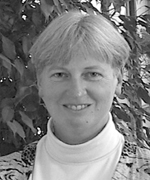
Social Science One Faculty Services
University of California at Santa Cruz
Santa Cruz, CA 95064
Phone: 831-459-3360
E-mail: gallow@cats.ucsc.edu
Web: http://anthro.ucsc.edu/a_galloway.shtml
- The Glamorous World of the Forensic Anthropologist: The True Story (P)
- Forensic Analysis of Skeletal Trauma (G)
- The Legal Responsibilities of Forensic Anthropologists (S)
Dr. Alison Galloway is Professor of Anthropology and currently serves as Chair of the Anthropology Department and Vice-Chair of the Academic Senate. Her undergraduate degree is from the University of California, Berkeley and her masters and doctoral degrees are from the University of Arizona. She joined the UCSC faculty in 1990 as an assistant professor.
She acts as forensic consultant to the coroner's office for Santa Cruz, Monterey, San Benito, San Luis Obispo, Stanislaus, Sacramento, Calaveras and Tuolumne counties. In this capacity, she analyzes skeletal material to develop a profile of the deceased to assist in the identification process, examines trauma found on the bones and assesses the interval between death and the recovery of the remains. With almost 20 years of experience in this field, she is increasingly called for both criminal and civil cases.
Her research focuses on the analysis of human skeletal material in the forensic context. Projects include investigation of the effects of reproduction on the skeleton of women, the postmortem decay process and the environmental factors that alter the rate and sequence of decomposition, and the production of trauma in skeletal material. She is currently working on a) the biomechanics of gunshot injury to bone and on b) the mechanisms by which "child-birth" indicators in the human pelvis are produced.
Along with M.E. Morbeck and Adrienne Zihlman, she is a co-editor of The Evolving Female: A Life History Perspective. This volume examines the complexity of female lives - the delicate balance between maintaining one's own survival while maximizing the production and survival of offspring. The book draws together information from studies of humans, apes, monkeys and other animals.
Her more recent book, Broken Bones: Anthropological Assessment of Blunt Force Trauma, provides a reference for the analysis and description of blunt force injuries to bones - how they are produced, why they appear as they do and what are the most likely situations in which they occur. The book is designed for forensic anthropologists but also is useful for anyone who examines bones in the forensic or archaeological context.
In addition, she has numerous publications in major peer-reviewed journals including the American Journal of Physical Anthropology and the Journal of Forensic Sciences. She frequently lectures on forensic anthropology to community groups, K-12 classes, and public groups focusing on anthropology and science as well as professional organizations. She has served as the Physical Anthropology Section Chair of the American Academy of Forensic Sciences and as a board officer of the American Board of Forensic Anthropology.
Roscoe Giles
Department of Electrical and Computer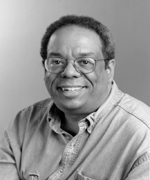 Engineering
Engineering
College of Engineering
Boston University
Boston, MA 02215
Phone: 617-353-9590
E-mail: roscoe@bu.edu
Web: http://roscoe.bu.edu
- Computing Metaphors and "E-Culture" (G)
- Grid Power to the People (G)
- Micromagnetic Simulations: Dynamics and Topology (S)
Upon completing his Bachelor of Arts in Physics at the University of Chicago, Rosoce Giles went on to complete both his Master of Science and doctorate degrees in Physics at Stanford University. His expertise and research interests include computational physics, learning technologies, distributed and parallel computing, and computational science. Dr. Giles is the team leader for the Education, Outreach, and Training Partnership for Advanced Computational Infrastructure (EOT-PACI), Deputy Director of the Center for Computational Science at Boston University and Co-Director of the Boston University Mariner Project. Dr. Giles is also the Executive director of the new Institute for African-American eCulture (iAAEC) and Member-at-Large of the Executive Committee of the Association of Computing Machinery (ACM).
Judith Herzfeld
Department of Chemistry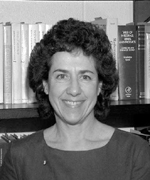
MS #105
Brandeis University
Waltham, MA 02454-9110
Phone: 781-736-2538
Fax: 781-736-2516
E-mail: Herzfeld@brandeis.edu
Web: http://www.brandeis.edu/~herzfeld
- The Subversiveness of Asking "Why?": Social Implications of Neuro-determinism (P)
- Crowding Induced Order: From Liquid Crystals to Cell Biology (G)
- Sensors and Pumps: Molecular Mechanisms of Retinal-Based Signal and Energy Transducers (G)
- Pumping Ions: NMR Studies of Solar Energy Transduction in the Bacteriorhodopsin Photocycle (S)
Judith Herzfeld is Professor of Biophysical Chemistry at Brandeis University. Her research group uses solid state NMR to study microbial proteins involved in light-driven ion-transport and gas vesicle formation, and statistical thermodynamics to study spontaneous order in crowded solutions including self-assembling systems found in biological cells. Professor Herzfeld is also interested in the social implications of neuro-determinism and in methods for improving chemical education. Initially attracted to science by the post-Sputnik science programs of the New York City public schools, Professor Herzfeld received her A.B. in chemistry from Barnard College, her Ph.D. in chemical physics from MIT, and her M.P.P. from the Kennedy School of Government. She is a fellow of the American Association for the Advancement of Science and the American Physical Society. She is also a recipient of the National Science Foundation Faculty Award for Women Scientists and Engineers.
Zhibing Hu
Department of Physics 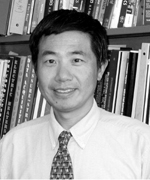
University of North Texas
P.O. Box 31197
Denton, TX 76203
Phone: 940-565-4583
Fax: 940-565-4824
E-mail: zbhu@unt.edu
- Hydrogel Opals (G, S)
- Smart Hydrogels (P)
Zhibing Hu is a professor of physics at University of North Texas (UNT). He received his Ph.D. in experimental condensed matter physics from McMaster University, Hamilton, Canada. He was a postdoctoral research fellow at Massachusetts Institute of Technology. His research interests include the study of physical and chemical properties of polymer gels and related biomaterials, self-assembling and phase behavior of hydrogel colloidal systems, synthesis and application of nanostructured hydrogels for controlled drug release. His research has been published in Science and Nature, reported by Chemical & Engineering News and Optics & Photonics News, and appeared on the cover of Advanced Materials. Dr. Hu has been a visiting professor at University of Texas Southwestern Medical Center at Dallas. He has received the Distinguished Physics Teaching Award and the Developing Scholars Award of the UNT.
William M. Jackson
Department of Chemistry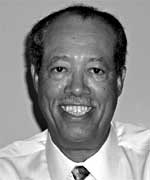
1 Shields Ave.
University of California
Davis, CA 95616
Phone: 530-752-0504
Fax: 530-754-7603
Web Page: http://www-chem.ucdavis.edu/groups/jackson/
- Comets, Messengers from the Past: Decoding the Message (P)
- Viewing Atmospheric and Astrochemical Photochemical Reactions with Velocity Ion Imaging (G)
- Photochemical Reaction Dynamics with Velocity Ion Imaging and VUV Lasers (S)
William Jackson is a professor of chemistry at the University of California at Davis. He also has taught at Howard University and worked at the Goddard Space Flight Center.His research interests include laser chemistry, laser photochemistry, free radical gas phase reactions and cometary astrochemistry. He and his colleagues are studying photodissociation dynamics by using one laser to produce the free radical under study, a second laser to photodissociate the free radical and a third laser to probe the internal energy distribution of the free radical. A member of Sigma Xi, Jackson's professional affiliations include the American Chemical Society, American Physical Society, the American Association for the Advancement of Science and the Optical Society of America, among others. He has been a Guggenheim Fellow and has received a number of teaching and research awards, including a Humboldt Research Award and a Lifetime Mentor Award from the AAAS.
Helen E. Longino
Philosophy Department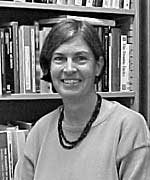
831 Heller Hall
University of Minnesota
Phone: 612-625-5047
Fax: 612-626-8380
E-mail: hlongino@tc.umn.edu
- Can Values Be Good for Science? (G)
- Individualism and Folk Psychology in the Scientific Study of Aggression (P)
- Science and Values: A Feminist Perspective (G)
Helen E. Longino, who received her Ph.D. in philosophy from the Johns Hopkins University, is a Professor of Philosophy and Women's Studies and member of the Minnesota Center for Philosophy of Science at the University of Minnesota. Her work in the philosophy of science has focused on two areas: the character of scientific knowledge practices and a variety of philosophical issues raised by the scientific study of behavior. She is known particularly for bringing feminist concerns about gender into conversation with mainstream work in both of these domains of inquiry. Her research has been recognized by grants from the National Science Foundation, as well as from private foundations, and has been widely published in a variety of journals. Her first book, Science as Social Knowledge, was published by Princeton University Press in 1990. Her new book, The Fate of Knowledge, will be available, also from Princeton University Press, in late 2001.
Heather McKillop
Department of Geography and Anthropology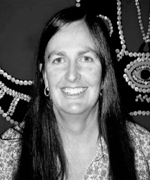
227 Howe-Russell Geoscience
Louisiana State University
Baton Rouge, LA 70803
Phone: 225-579-6178
Fax: 225-578-4420
E-mail: hmckill@lsu.edu
Web: http://www.ga.lsu.edu/Maya_Night.htm
- Sea Level Rise and Ancient Maya Civilization (P,G)
- Salt: White Gold of the Ancient Maya (G,P)
- Ancient Maya Sea Traders (S)
Heather McKillop is William G. Haag Professor of Archaeology at Louisiana State University. She graduated in Anthropology from Trent University with an Honours B.Sc. (1977) and M.A. (1980) and from the University of California-Santa Barbara (1987) with a Ph.D. Since 1979, she has carried out an active program of field survey and excavation on the ancient Maya of the mangrove coast and offshore islands and in the adjacent shallow coastal waters of Belize, Central America. She has received funding for her research from NSF, SSHRC (Social Sciences and Research Council of Canada), Wenner-Gren, Earthwatch Institute, and the Ontario Heritage Foundation, in addition to UC-Santa Barbara, Louisiana State University, and private donors. She teaches archaeology courses in the Department of Geography and Anthropology at LSU.
Her interests are in the importance of sea trade and the exploitation and production of maritime resources, such as salt, seafood, and stingray spines in the development of Maya civilization, as well as the ancient Maya responses to rising sea level. Initial excavations at the trading ports of Moho Cay and Wild Cane Cay focused on the timing and importance of sea trade, as measured by trade goods such as obsidian blades, chert tools, and exotic pottery in stratified deposits. Excavations at Wild Cane Cay and nearby Frenchman's Cay revealed a distinctive style of coastal architecture using coral rock mined from the sea. In order to understand the extent and the place of both long-distance trade and more localized exchange in Maya society, she initiated a regional search for sites in the Port Honduras of southern Belize, finding many sites both on land and underwater. The discovery and excavation of specialized salt works in a coastal lagoon led her to question the centralized control of the urban Maya in production, and impact of environmental changes on the Classic Maya collapse. She has also carried out research on ancient burials and historic graves, including excavation of Maya burials, a large 19th century churchyard, and a late prehistoric native Canadian burial ground.
In addition to Salt: White Gold of the Ancient Maya (2002) on her underwater excavations of salt works and the co-edited volume, Coastal Maya Trade (1989), she has published many articles in edited volumes and journals. She is completing a book, The Maya (under contract with ABC-Clio publishers) and her book, In Search of Maya Sea Traders, is under review for publication.
She was guest Curator and wrote the catalog for the LSU Museum of Art's exhibit "Costa Rican Jade and Stone Mace Heads" (August-December 2002). She hosts LSU Maya Archaeology Night, a periodic public event. Dr. McKillop is Chair of the Louisiana Archaeological Survey and Antiquities Commission (State of Louisiana), past Treasurer (1995-1997) and Certification Chair (1993-1995) of the Society of Professional Archeologists (SOPA-now ROPA), and has served on committees of Sigma Xi, the Society for American Archaeology, the Register of Professional Archaeologists (ROPA), and the Ontario Archaeological Society.
Richard Meindl
Department of Anthropology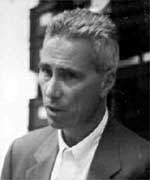
P.O. Box 5190
Kent State University
Kent, OH 44242-0001
Phone: 330-672-GENE
Fax: 330-672-2999
E-mail: rmeindl@kent.edu
- Human Demographic Evolution: A View from Archaeology (G)
- Overcoming Biases in Paleodemography (S)
Richard Meindl is Professor and Chair of the Department of Anthropology at Kent State University where he teaches courses in demography, statistics, and biological anthropology. He earned his doctorate in anthropology in 1979 from the University of Massachusetts, at Amherst. He has conducted research in population genetics, human and primate evolution, and human ergonomics. His role in the Connecticut Valley Project was the historical demography of western New England, especially the mortality transition of the 19th century. Most recently, Meindl has studied the paleodemography of an archaeological area called the Shell Mound Region of western Kentucky. These were pre-agricultural peoples whose skeletal remains and artifacts have been recovered from sites more than four thousand years old. They provide a special opportunity to examine the precursors of complex societies, sedentary living, and human demographic evolution.
Richard Montgomery
Department of Mathematics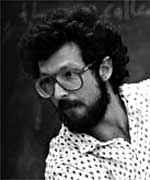
University of California
Santa Cruz, CA 95064
Phone: 831-459-4018
Fax: 831-459-3260
E-mail: rmont@math.ucsc.edu
Web Page: http://count.ucsc.edu/~rmont
- Falling Cats and Classical Quarks (P, G, S)
- Figure Eights with Three Bodies (P, G, S)
- Heisenberg and the Isoperimetric Inequality (P, G, S)
Richard Montgomery is a professor of mathematics at the University of California at Santa Cruz. He received his B.A. at Sonoma State University and his Ph.D. at the University of California at Berkeley. His work can be characterized as applied differential geometry. Much of it involves applications of gauge theory (fiber bundles with connections) to problems in mechanics and control theory. One such problem is that of a falling cat dropped from upside down. This geometric point of view on the cat's problem gives us a deep understanding and allows us to solve it explicitly for certain model cats. Most recently, Montgomery has returned to the N-body problem, which has a long history. He has been approaching it using modern methods taken from equivariant differential geometry and calculus of variations. Recently Montgomery and Alain Chenciner rediscoverd and proved the existence of a figure eight orbit type orbit for three bodies. The three masses chase each other around a figure eight shaped planar curve. This received press in Science, Science News and several other popular science journals.
Melvin R. Ramey
Department of Civil & Environmental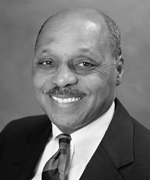 Engineering
Engineering
University of California at Davis
1 Shields Avenue, Davis, CA 95616
Phone: 530-752-0896
E-mail: mrramey@ucdavis.edu
Web: http://cee.engr.ucdavis.edu/faculty/ramey/
- Moving Forward: Force Relationships of the Long Jump and Triple Jump in Track and Field (P)
- The Dynamics of the Long Jump and Triple Jump in Track and Field (G)
- The Design of the Long Jump in Track and Field (S)
Melvin Ramey is professor of civil and environmental engineering at the University of California at Davis. He received his Ph.D. from Carnegie Mellon University. An award-winning teacher, Ramey performs research in the areas of structural design (including computer-aided design), structural testing, fiber reinforced concrete and biomechanics. His work in computer-aided design is directed toward interactive active design methodologies. He has conducted tests on timber-concrete composite beams, fiber reinforced concrete seismic joints, prestressed concrete anchorages, bridge pile extensions and other structural members. Recent work has included an assessment of prison construction in California. His work in biomechanics focuses on human jumping and rehabilitation. Recent work has emphasized the incorporation of engineering design methodologies for improving human movement, especially jumping.
Gregory H. Robinson
Department of Chemistry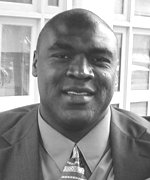
Chemistry Bldg. Rm. 504
University of Georgia, Athens, GA, 30602-2556
Phone: 706-542-1853
Fax: 706-542-9454
E-mail: robinson@chem.uga.edu
Web: http://www.chem.uga.edu/faculty/robinson.html
- Metalloaromaticity: Bridging the Gap Between Organic Chemistry and Inorganic Chemistry (G, S)
- Gallium-Gallium Triple Bonds. Multiple Bonds Involving the Heavier Main Group Elements (G, S)
- Gallane, Gallenes and Gallynes: Dynamics About the Ga-Ga Bonds (G, S)
Gregory Robinson was educated in Alabama, receiving his B.S. from Jacksonville State University and his Ph.D. from the University of Alabama. Before joining the University of Georgia faculty in 1995, he was a professor at Clemson University. He was an Alexander von Humboldt Research Fellow at the Technische Universitat Berlin in 1994. His research interests concern the organometallic chemistry of the main group elements. Historically somewhat overshadowed by the organometallic chemistry of the transition metals, the organometallic chemistry of the main group elements is now experiencing great activity. In large part this is driven by the quest for single source molecular precursors for advanced inorganic/electronic materials. His research group has developed new synthetic strategies resulting in the preparation of a number of interesting gallium-phosphorus compounds, phosphinogallanes, and indium-phosphorus compounds, phosphinoindanes, which have been shown to be attractive molecular precursor templates.
National Academy of Engineering-
Sigma Xi Lecturer
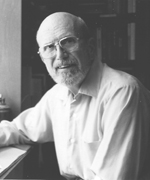
Theodore Rockwell
Radiation, Science & Health, Inc.
3403 Woolsey Drive
Chevy Chase, MD 20815
Phone: 301-652-9509
Fax: 301-652-0534
E-mail: tedrock@cpcug.org
- Facts and Myths about Ionizing Radiation
(P,G, S) - Heresy, Excommunication and Other Weeds in the Garden of Science (P, G, S)
- What Should We Do with All That Lethal Nuclear Waste? (P, G, S)
Theodore Rockwell is a founding officer of the engineering firm MPR Associates, Inc., and of Radiation, Science, and Health, Inc., an international organization of independent radiation experts committed to bringing radiation policy into line with the best scientific theory and data. He is a fellow of the American Nuclear Society and recipient of the first ANS Lifetime Contribution Award, now known as the Rockwell Award, and was awarded Distinguished Service Medals from both the Navy and the Atomic Energy Commission. He is author of several books, technical papers and articles on radiation and nuclear power, including the standard text Reactor Shielding Design Manual. He was technical director of Admiral Hyman Rickover's program to build the nuclear Navy and the world's first commercial atomic power station at Shippingport, PA. He has several patents, including one listed in "a selection of [27] landmark U.S. atomic energy patents from all the patents issued to date." His works have been published in German, Dutch, Russian, Chinese, Japanese and Korean.
Richard J. Shavelson
School of Education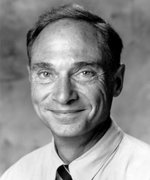
Stanford University
485 Lasuen Mall
Stanford, CA 94305-3096
Phone: 650-723-4040
Fax: 650-725-7443
E-mail: richs@stanford.edu
Web: http://www.stanford.edu/dept/SUSE/SEAL/
- On What We're Measuring and Not Measuring in Science Achievement: Consequences for Teaching and Learning (P)
- On a Conceptual Framework for Science Achievement and Corresponding Empirical Support (G)
- Research on the Validity of a Conceptual Framework for Science Achievement (S)
Rich Shavelson received his bachelor's degree in psychology from the University of Oregon, a masters in psychology from San Jose State University and a PhD in educational psychology from Stanford University. His dissertation research focused on the cognitive structures developed when learning physics (mechanics) and their correspondence to the structure of the subject matter.
Shavelson is professor of education and (by courtesy) of psychology at Stanford University. He served as the I. James Quillen Dean of the Stanford University School of Education from 1995-2000. Before joining Stanford, he was dean of the Graduate School of Education and professor of education and (by courtesy) of statistics at the University of California, Santa Barbara (UCSB) from 1987 to 1994. Before joining the UCSB faculty, he was director of the RAND Corporation's Education and Human Resources Program (1980-1985) and professor of education at UCLA (1973-1988). Shavelson is a former president of the American Educational Research Association, a member of the National Academy of Education, a fellow of the American Association for the Advancement of Science, the American Psychological Association, and the American Psychological Society, and a National Associate of the National Academy of Science.
His current research is in social science measurement and evaluation methods, psychometrics, and related policy and practice issues. His measurement research involves working closely with teachers and scientists in the development of performance and other assessments in science education, and their evaluation along psychometric, cost, classroom use and social impact lines. Recently his research has focused on linking assessment methods with a working definition of achievement that includes declarative, procedural, strategic, and meta-cognitive knowledge. His policy work currently focuses on assessment of learning in higher education, and the quest for accountability. Co-author with Professor Noreen Webb of the book,Generalizability Theory: A Primer, Professor Shavelson's other psychometric publications include research on the dependability of performance assessments used in work and education. His policy research includes two monographs on alternative designs of indicator systems for monitoring the health of the nation's mathematics and science education systems.
Emoke J. E. Szathmary
Office of the President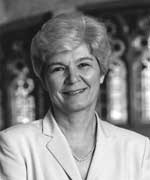
202 Administration Building, Winnipeg, MB, Canada R3T 2N2
Phone: 204-474-9345
E-mail: szathmar@umanitoba.ca
Web: http://www.umanitoba.ca/admin/president/
pres_curr_vitae.php
- What Does Genetics Tell Us about the Origins of Aboriginal North Americans? (P)
- A Case Study on the Etiology of Type 2 Diabetes in a Group of Indigenous Subarctic North Americans. (G)
- Genetic Evidence Regarding the Peopling of the Americas. (S)
Dr. Szathmáry was born in Hungary in 1944 and came to Canada in 1951. She earned a BA (Honours) and a PhD in Anthropology from the University of Toronto. After a year's appointment as Assistant Professor at Trent University, she joined the Department of Anthropology at McMaster University in 1975. She was promoted to the rank of Professor in 1983, and became Chairman of the Department of Anthropology in 1985. In 1989 Dr. Szathmáry left McMaster to be Dean of the Faculty of Social Science at the University of Western Ontario, and she returned to McMaster University in 1994 to serve as Provost and Vice-President (Academic). In 1996, she was named President of The University of Manitoba.
Since her arrival in Manitoba, Dr. Szathmáry has been actively involved in a number of public and private committees and boards at provincial and national levels. In 1998 she was a member of the Manitoba Electoral Boundaries Commission. As well, she was Co-Chair of the Manitoba Diabetes Strategy Steering Committee (1997-99), currently Co-Chairs the Advisory Committee on Diabetes to the Minister of Health and is a member of the board of the St. Boniface General Hospital. In 2000 she became Chair of the Council of Presidents of Universities in Manitoba and was elected a member of the Executive Committee and Board of the Association of Universities and Colleges of Canada.
Dr. Szathmáry's research has focused on the genetics of the aboriginal peoples of North America. Her work has addressed the causes of type-2 diabetes in aboriginal North Americans, the genetic relationships within and between peoples of North America and Asia, and microevolution of the peoples of the subarctic and arctic. Her field research was conducted among Ottawa, Ojibwa and Dogrib peoples in Ontario and the Northwest Territories. She is the author of over 80 scientific articles and reviews, and has co-edited three books. Dr. Szathmáry is the past editor of the Yearbook of Physical Anthropology (1987-91), and of the American Journal of Physical Anthropology (1995-2001), which is the official publication of the American Association of Physical Anthropologists.
Dr. Szathmáry is a Fellow of the Arctic Institute of North American (1989) and the American Association for the Advancement of Science (1995). She held the Paul T. Baker Lectureship at The Pennsylvania State University in 1992, and was named a life member of the Canadian Association for Physical Anthropology in 1997. In 1998 the American Anthropological Association named her Distinguished Lecturer, which is the highest recognition given by the anthropological discipline for a lifetime of exemplary scholarship.
Valeria E. Taylor
Electrical and Computer Engineering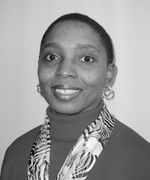 Department
Department
L475 Tech Bldg.
2145 Sheridan Road
Northwestern University
Evanston, IL 60208-3118
Phone: 847-467-1168
Fax: 847-467-4144
E-mail: taylor@ece.nwu.edu
Web: http://www.ece.northwestern.edu/~taylor
- Using One, Two, Three,…Thousands of Computers (P)
- Parallel Computers: Past, Present and Future (G)
- Performance Analysis of Parallel and Distributed Applications (S)
Valerie Taylor received her B.A. and M.S. degrees in electrical engineering from Purdue University and her Ph.D. in electrical engineering and computer sciences from the University of California at Berkeley. Her research areas include performance of parallel scientific applications, computer architecture and visual supercomputing environments. Specifically, she's interested in development of techniques for systematically analyzing and improving application performance in the context of parallel and distributed scientific applications, visual supercomputing environments and distributed systems. Taylor is the recipient of a National Science Foundation Young Investigator Award, the IEEE Educational Society Harriet B. Rigas Award and the Computing Research Association's A. Nico Habermann Award.
Kimberly M. Thompson
Society for Risk Analysis/Sigma Xi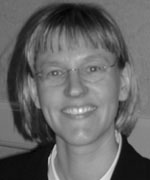 Distinguished Lecturer
Distinguished Lecturer
Harvard School of Public Health and Children's Hospital Boston, Harvard Medical School
677 Huntington Ave., 3rd Floor
Boston, MA 02115
Phone: 617-432-4285
Fax: 617-432-3699
E-mail: kimt@hsph.harvard.edu
- Life in the Age of Risk Management (P or G)
- Risk Management and Communication Meet Uncertainty and Variability (S or G)
- Managing Children's Risks: It Takes a Commitment (G)
Dr. Kimberly Thompson is Associate Professor of Risk Analysis and Decision Science at the Harvard School of Public Health, where she created and directs the Kids Risk Project. Professor Thompson is a nationally and internationally known as an expert on children's risks and on probabilistic risk analysis. Her research interests and teaching focus on the issues related to developing and applying quantitative methods for risk assessment and risk management, and consideration of the public policy implications and communication challenges associated with including uncertainty and variability in risk characterization. Drawing on a diverse background, she seeks to effectively integrate technological, social, political, legal, and economic issues into risk analyses that inform public policy and improve decision making in what she calls the Age of Risk Management (www.aorm.com). A popular and engaging speaker, Professor Thompson talks about the serious topic of "Life in the Age of Risk Management" using humor and real life examples that are relevant to broad audiences. She demonstrates the hazards of failing to consider the real differences between individuals that matter when making public policy decisions, and she talks about how to become empowered by uncertainty, instead of paralyzed by it. As director of the Kids Risk Project (www.kidsrisk.com), Dr. Thompson is a leading authority on the risks to children and the need for better information to improve decisions made by kids, parents, policy makers, and others. Professor Thompson is co-Founder and Director of Research of the Center for Media and Child Health at the Children's Hospital in Boston, and she performs active research on the messages in popular media (e.g., motion pictures and video games). Dr. Thompson earned her Doctor of Science Degree in Environmental Health at Harvard and her Bachelor and Master of Science Degrees in Chemical Engineering from M.I.T. She is author of Humor in the Age of Risk Management (AORM, 2003) and Overkill: How Our Nation's Abuse of Antibiotics and Other Germ Killers Is Hurting Your Health and What You Can Do About It (with Debra Bruce, Rodale, 2002), and her work has been widely covered in popular media.
Carol Ward
Department of Anthropology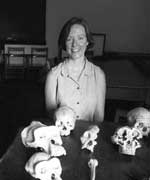
107 Swallow Hall
University of Missouri
Columbia, MO 65211
Phone: 573-882-5407
Fax: 573-884-5450
E-mail: WardCV@missouri.edu
http://rcp.missouri.edu/carolward/links.html
- Human Origins: Newest Evidence of Our Earliest Ancestors (P,G)
- How Human Intelligence Evolved (G,S)
- The Origin of Human Locomotion (P,G,S)
With a dual faculty appointment, Carol Ward serves as the primary link between anthropology and anatomy at the University of Missouri-Columbia. Her interests include the evolution of humans and our closest relatives, apes and monkeys, and her research focuses on fossils from East and South Africa, primarily Kenya. She takes a mechanical approach to the interpretation of the postcranial skeleton and uses these principles to reconstruct the behavior of extinct animals.
Her current research involves description and interpretation of early hominid fossils from Ethiopia. Another interest is the great radiation of apes that lived in the early Miocene (almost 18 million years ago) out of which came human ancestors. Ward is also interested in the functional anatomy of the spines and the hands of modern and fossil humans and of our earlier relatives. She teaches anthropology courses during winter semester only, and anatomy during summer.
Isiah M. Warner
434 Choppin Hall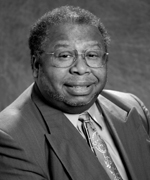
Department of Chemistry
Louisiana State University
Baton Rouge, LA 70803
Tel: 225-578-2829
Fax Number: 225-578-3971
E-mail: iwarner@lsu.edu
Web:http://chemistry.lsu.edu/chem/facultypages/
warner/warner.asp
- Mentoring: A Novel Method for Battering Brick Walls (P)
- Chiral Drugs: The Jekyl/Hyde Behavior of These Molecules in Biological Systems (G)
- Mixing Chromatography and Spectroscopy to Achieve Chiral Recognition With Molecular Micelles (S)
Isiah Warner is Boyd Professor and Philip W. West Professor of Analytical and Environmental Chemistry at LSU. He received his B.S. from Southern University in 1968 and worked as a research chemist with Battelle Northwest for five years before receiving his Ph.D. from the University of Washington in 1977. He served on the faculties of Texas A&M University and Emory University before joining LSU in 1992. Professor Warner's research focuses in the areas of molecular spectroscopy and separation science. He has published more than 200 peer reviewed manuscripts, several book chapters, and has co-edited two books. He has won numerous awards for his research, teaching, and mentoring including the 2000 Eastern Analytical Symposium Award For Outstanding Achievements in The Fields of Analytical Chemistry; the 1997 residential Award for Excellence in Science, Mathematics, and Engineering Mentoring; the 2000 AAAS Lifetime Mentor Award; and the 2000 CASE Louisiana Professor of the Year Award from the Carnegie Foundation. In 2002 he became one of the first Howard Hughes Medical Institute professors, a new initiative to support undergraduate science education. Warner will use the $1 million award that comes with it to focus on mentoring minorities.
Milford H. Wolpoff
Paleoanthropology Laboratory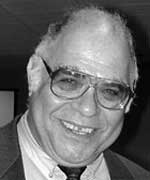
Department of Anthropology
University of Michigan
Ann Arbor, MI 48109-1382
Phone and Fax: 734 4753291
E-mail: wolpoff@umich.edu
- A Neandertal in Your Closet? - (P,G,S)
- Modern Human Origins (P,G,S)
- The Origin of Humanity (P,G,S)
Milford Wolpoff is a professor of anthropology at the University of Michigan whose interests include evolutionary process and theory and functional morphology. He has firsthand experience with virtually the entire human and pre-human fossil record, from evidence of hominid origins to the appearance of modern humans and their evolution. His research overseas has been supported by grants from the National Science Foundation, the Committee for Scholarly Exchange with the People's Republic of China and the National Academy of Sciences, among others. Wolpoff is one of the developers of the Multiregional Evolution hypothesis about the pattern of human evolution, and is deeply involved in the ongoing debate over the place of Neanderthals. His recent books include the definitive textbook Paleoanthropology and the award-winning Race and Human Evolution with Dr. Rachel Caspari. Wolpoff is often heard on PBS, quoted in articles on fossil and genetic discoveries in the New York Times and other newspapers and cited in journals and magazines.